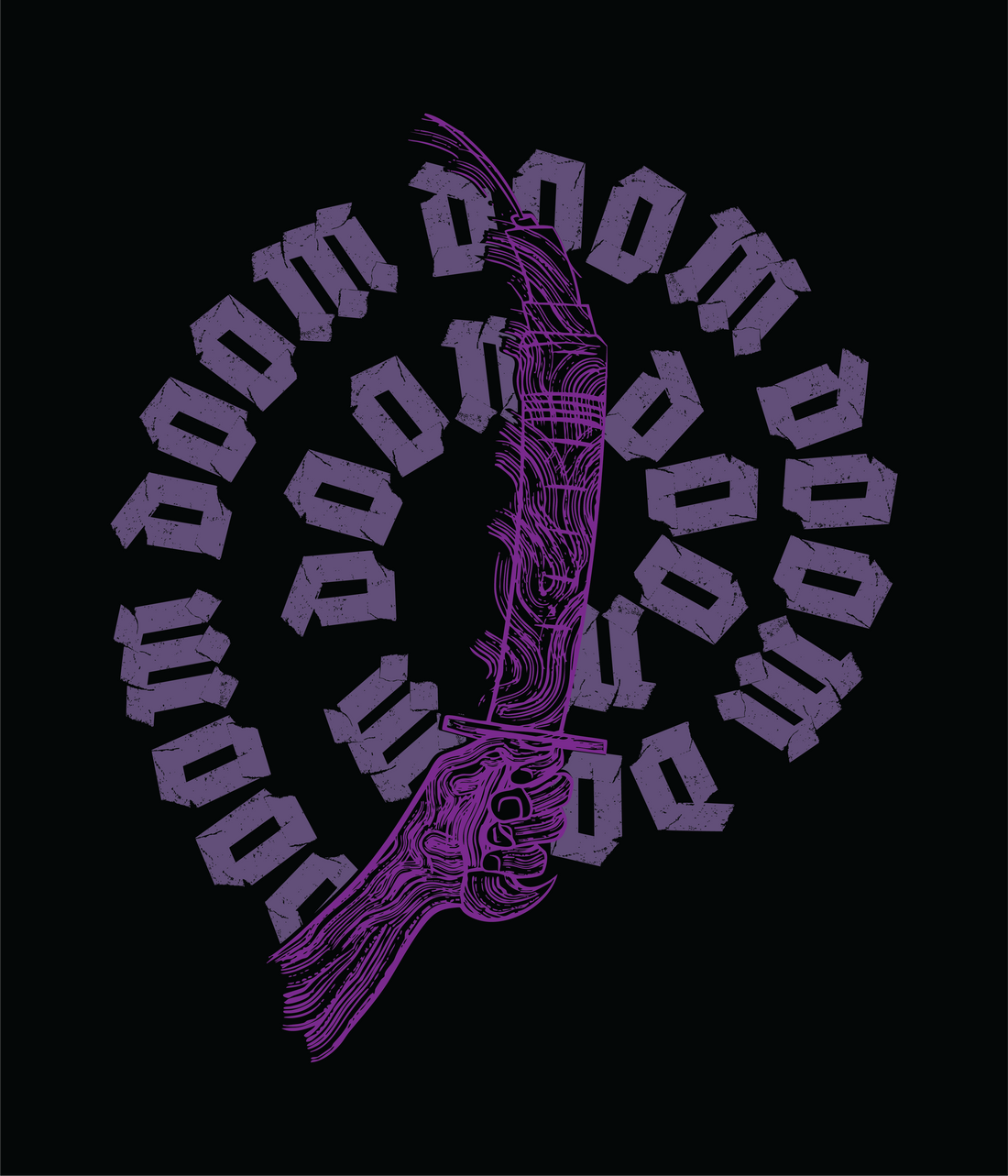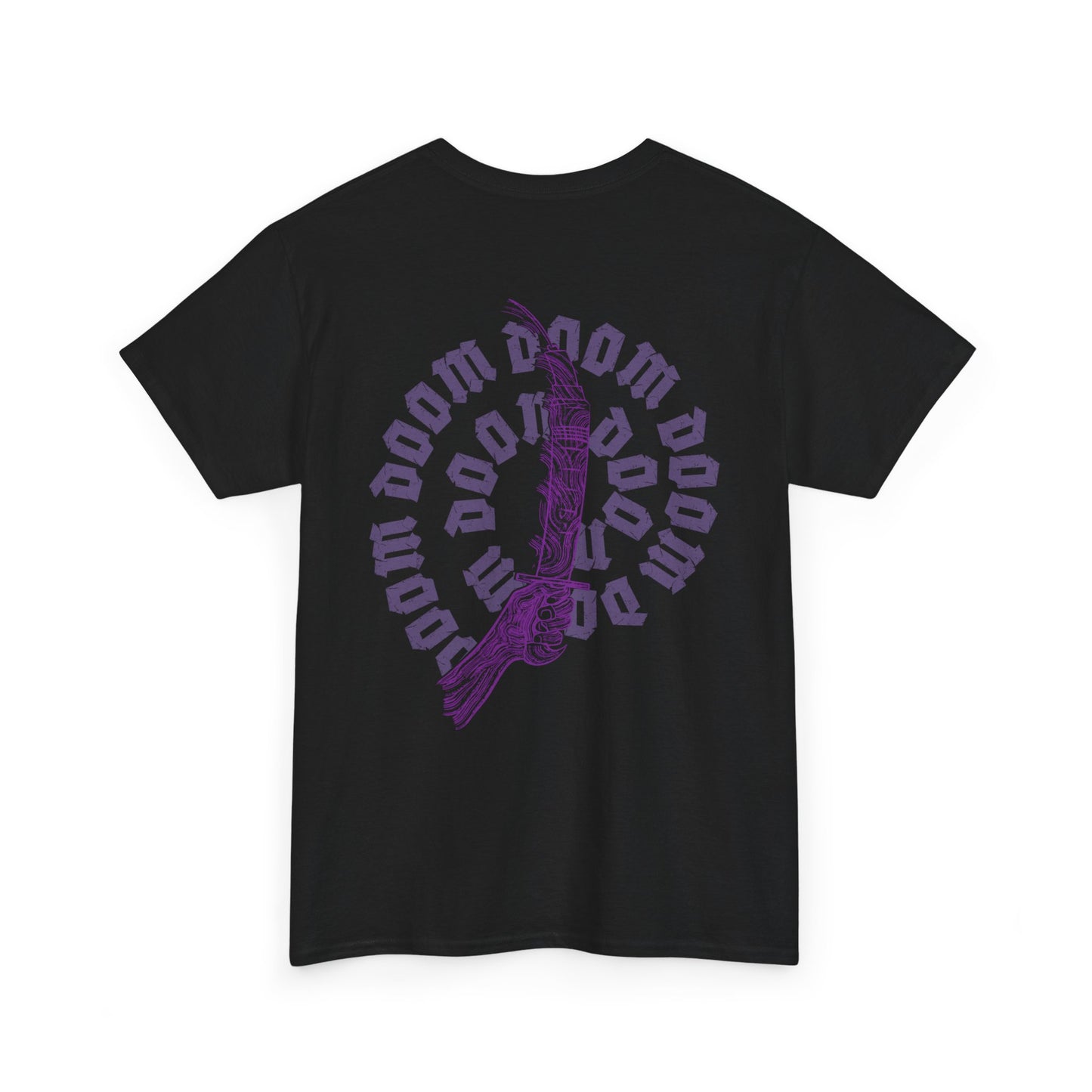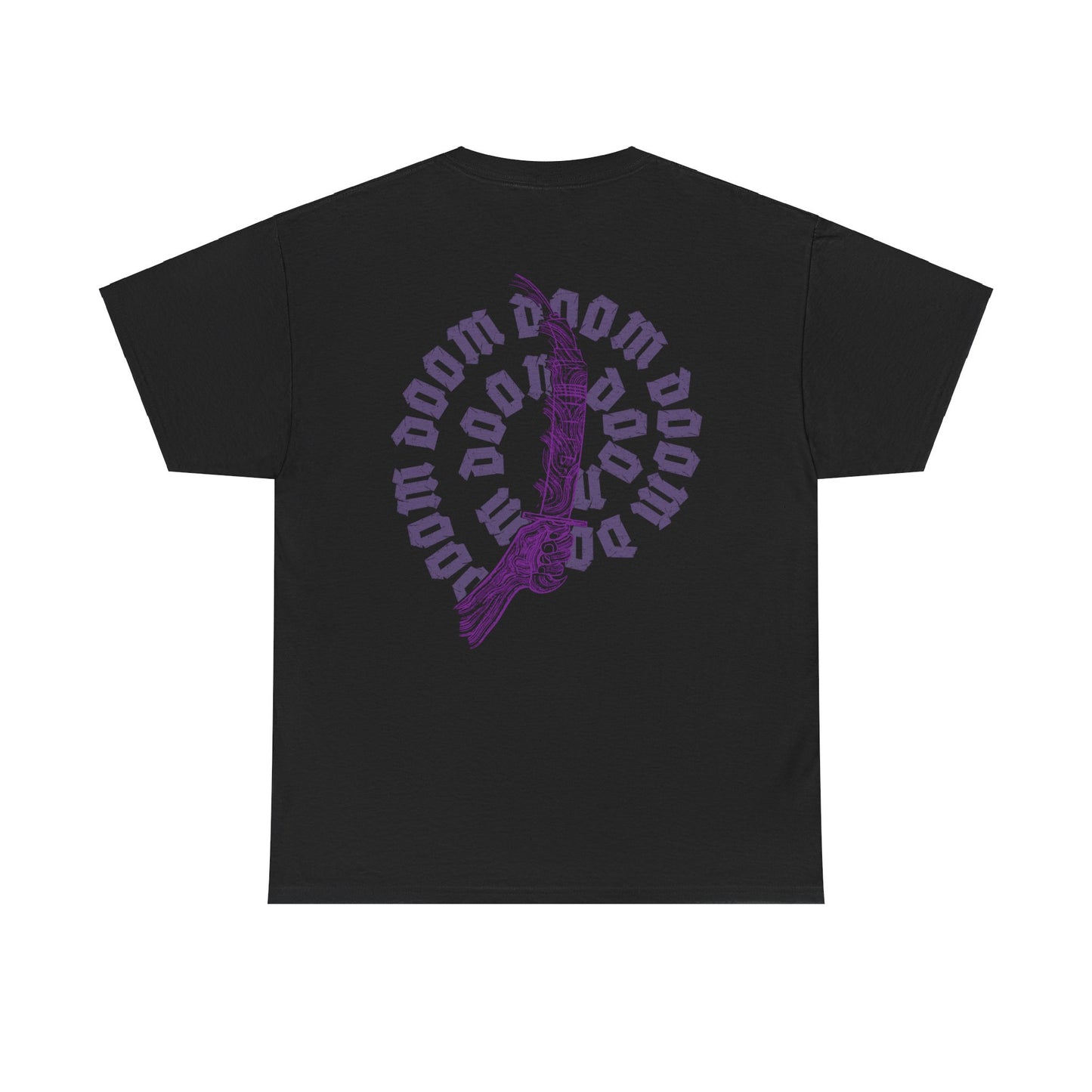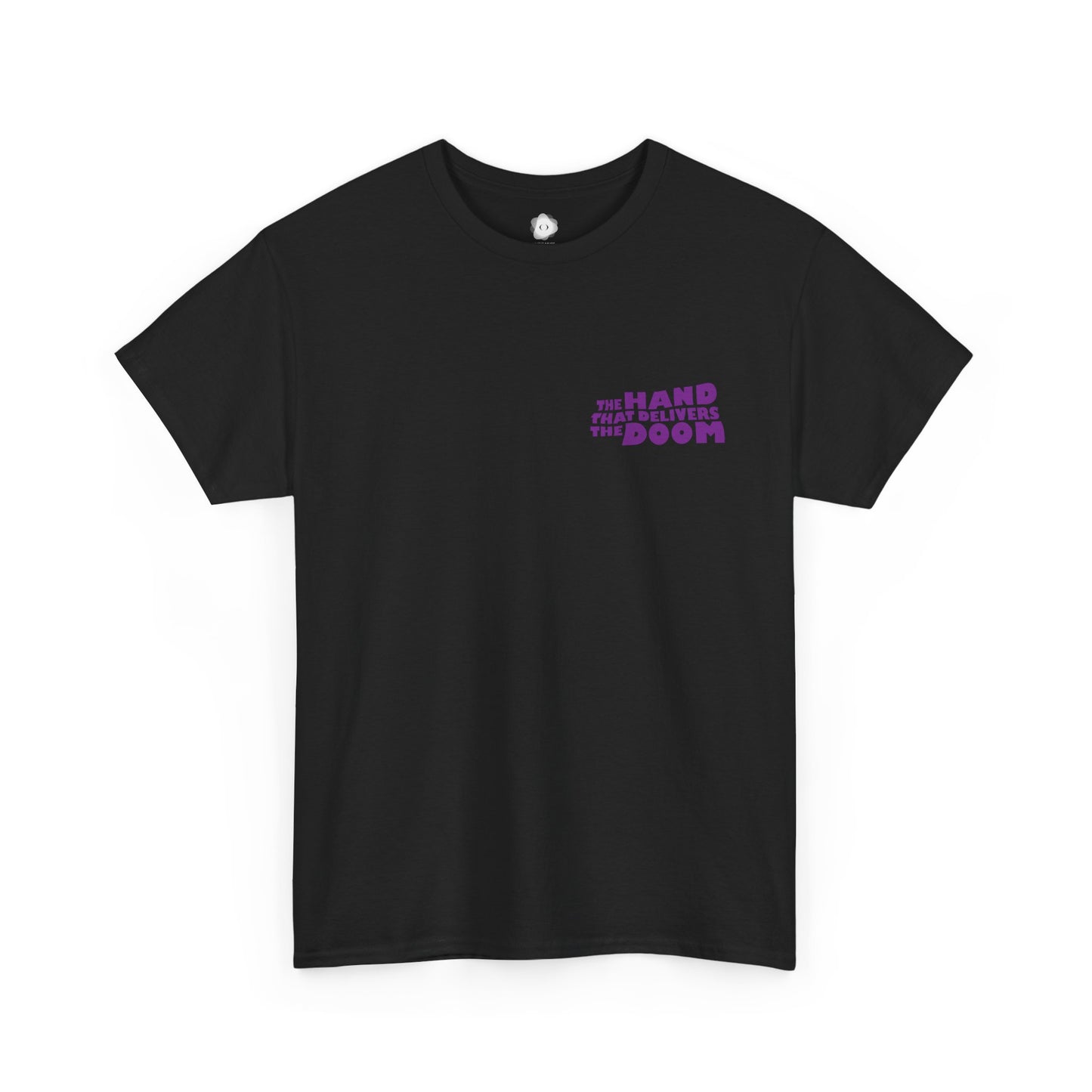
Black Sabbath’s Hand of Doom: A Fractured Descent into Addiction
Share
Black Sabbath’s Hand of Doom is a story— a raw and visceral tale of addiction. Written in the shadow of the Vietnam War, where heroin use skyrocketed among disillusioned soldiers, the song captures the broader societal decay of its time while zooming in on one addict’s tragic experience. It’s a masterpiece of storytelling, blending haunting lyrics, dynamic musical pacing, and unflinching honesty to immerse the listener in the fragmented mind of a heroin user.
What sets this song apart is its narrator: the addict is all characters at once—the user, the narrator, and the voice of addiction. He’s on a heroin trip, and he’s talking to himself. It’s a fractured monologue, reflecting both the allure and the horror of heroin. This internal dialogue is what gives the song its claustrophobic loneliness—there’s no one else in the story. The addict warns himself, mocks himself, and ultimately delivers his own doom.
Geezer Butler’s writing is the heart of the song. While Ozzy Osbourne’s unmistakable voice delivers the lyrics with chilling clarity, it’s Butler who crafts the world of Hand of Doom. Inspired by the horrors of the Vietnam era and the growing prevalence of heroin in counterculture, Butler doesn’t preach or judge. Instead, he shows us the addict’s journey: the rebellion, the escape, the regret, and the inevitable collapse. His words are vivid, poetic, and devastating, describing addiction with a lived-in reality that feels painfully authentic.
Ozzy’s delivery brings Butler’s words to life. His voice shifts from detached to frantic, from seductive to scolding, capturing the addict’s fractured psyche. The moments where he screams—“Now it’s killing you!” or “Now you’re gonna die!”—land like punches, forcing the listener to confront the addict’s reality. It’s a performance that makes you feel the desperation, euphoria, and doom of the story. It’s the musical equivalent of a heroin trip.
The band’s instrumentation is equally powerful. Sabbath doesn’t just tell a story—they make you experience it. Geezer’s slow, creeping bassline opens the song like an unsettled heartbeat, building tension and dread. Tony Iommi’s explosive guitar riffs mimic the rush of heroin—chaotic and overpowering—while Bill Ward’s drumming provides a pulse that is both alive and destined for damnation. Together, the band mirrors the progression of addiction: the anticipation, the high, the comedown, and the collapse.
Hand of Doom is a story of inevitability—rebellion that turns to regret, escape that leads to destruction, and a hand that seals its own fate
Now, let the lyrics unveil the addict’s descent into the grip of the hand that dooms.
The Decision: A Return to Doom
The song begins with mocking inevitability:
Whatcha gonna do? Times caught up with you.
Now you wait your turn, you know there’s no return.
The addict knows exactly what they’re doing—they’ve been here before—but they act like they haven’t. It’s Kafkaesque: a grim cycle of knowing, denying, and returning to the same fate.
There’s rebellion here too:
Take your written rules, you join the other fools.
Turn to something new, now it’s killing you.
Heroin starts as rebellion—rejecting societal norms and turning to “something new.” But that rebellion quickly becomes regret. The phrase “now it’s killing you” is screamed with such force that it feels like a realization hitting mid-high: the addict knows this path leads to death, but it’s too late to turn back.
The High: The Seductive Escape
Geezer Butler and the band refuse to lie about heroin’s allure. The addict finds escape:
From life you escape, reality’s that way.
Colors in your mind satisfy your time.
Heroin provides relief. It replaces reality with a euphoric haze—colors, freedom, and satisfaction. Lines like this show why addiction starts: because it works, for a while. The addict feels it even as their body begins to betray them.
Your mind is full of pleasure, your body’s looking ill.
Sabbath reveals the lie at the heart of heroin’s allure. The pleasure is real, but it’s shallow—fleeting and hollow. While the addict’s mind soars, their body decays, creating a dissonance that becomes impossible to ignore.
Don’t stop to think now
In the official lyrics, this is the only line of the song delivered by itself and for good reason. It stands out as a command—a moment of impulsiveness overtaking any internal debate. Immediate and desperate, encapsulating the addict’s refusal to acknowledge the truth in favor of chasing the high.
You’re having a good time baby, but that won’t last.
The narrator speaks inwardly, reflecting on their recurring struggle with heroin. There's a profound self-awareness in these moments, borne of experience and repetition. The tone is resigned yet matter-of-fact, an internal dialogue that accepts the truth without taking action. These lines vividly capture the transient nature of the high—addiction itself seems to murmur its seductive encouragement, compelling the chase for fleeting euphoria despite the certainty of the inevitable crash.
The Turning Point: Self-Scolding and Surrender
The high fades, and the addict begins to confront themselves. Sabbath shifts the narrative here, while keeping the euphoric, upbeat tone. The addict is still high and euphoric, but realization is setting in as they add internal dialogue that’s both scornful and resigned:
Oh, you know you must be blind to do something like this.
To take the sleep that you don’t know, you’re giving death a kiss.
These lines are poignant because they come from the addict themselves. They know exactly what they’re doing—taking heroin is like giving death a kiss—but it’s too tempting for them. The self-scolding is futile, a fleeting moment of clarity before the descent and degradation continues.
The addict’s physical decay becomes impossible to ignore.
Your mind is full of pleasure, your body’s looking ill.
To you it’s shallow leisure, so drop the acid pill.
The contrast between the mind and body is stark. Heroin offers a temporary escape, but the cost is already visible. The line “shallow leisure” underscores the hollowness of the pleasure, exposing it as meaningless in the face of the body’s deterioration.
Then comes the voice of addiction again, seductive and sinister.
Go out enjoy yourself, don’t bottle it in.
You need someone to help you, to stick the needle in, yeah.
Here, the addict surrenders completely. The dependency becomes personified—addiction is now the “helper,” the one who enables the ritual of the needle. It’s a chilling moment, as the addict loses the last shred of autonomy, handing control over to the drug itself.
This marks the climax. The euphoria is soon to be gone, as foreshadowed, replaced by self-awareness, physical decay, and the creeping presence of doom. The addict is still chasing the rabbit they know they’ll never catch—and they continue on anyway.
The Decline: Facing the Mirror
The high fades, and the addict’s descent begins. Sabbath paints a gruesome picture of heroin’s physical toll:
Now you know the scene
your skin starts turning green.
Your eyes no longer seeing
Life’s reality.
The line “Now you know the scene” is haunting because the addict is acknowledging they’ve been here before. The “scene” is the reality of addiction: sickness, blindness, decay.
Heroin, once the escape, now reveals its true face.
Push the needle in, face death’s sickly grin.
Death has been lurking throughout the song, and now it grins back at the addict. Heroin isn’t the savior—it’s the executioner.
The Doom: The Final Collapse
The addict reaches the point of no return. Sabbath describes it with brutal clarity:
Holes are in your skin, caused by deadly pin.
Head starts spinning ‘round, you fall down to the ground.
The physical collapse mirrors the addict’s complete loss of control. Death weaves its final threads.
Feel your body heave, death’s hands start to weave.
Here, Geezer’s words become mournfully poetic. Death is like a weaver, tying together the addict’s choices into a tragic end. The final lines deliver the devastating blow.
It’s too late to turn, you don’t want to learn.
Price of life you cry.
Now you’re gonna die.
The addict cries for life, but it’s too late. The song fades into silence, just like the addict’s last breath.
Lessons in the Darkness: The Reality of Addiction
Black Sabbath’s Hand of Doom is as relevant today as it was in 1970. Addiction has not disappeared; it remains a societal and personal struggle, an ever-present force that promises escape while delivering destruction.
Geezer Butler’s lyrics are central to the song’s power. Written during a time of war and disillusionment, they connect personal tragedy to societal decay.
First it was the bomb, Vietnam napalm, disillusioning, you push the needle in.
Addiction doesn’t happen in isolation—it’s tied to trauma, to a world that feels unbearable. Butler’s writing doesn’t moralize; it shows. There’s empathy without absolution, and honesty without glorification.
Ozzy Osbourne’s performance completes the story. His voice shifts between detached and desperate, perfectly capturing the addict’s fractured mind. When he delivers the final line—“Now you’re gonna die”—it’s unrelenting. There’s no redemption, only a mirror held up to the listener.
The “hand of doom” isn’t just heroin—it’s the addict’s own hand. It’s the hand that holds the needle, the hand that seals their fate. It’s the ultimate tragedy: self-awareness combined with helplessness.
The song doesn’t lecture, it doesn’t need to—its raw honesty and vivid storytelling are more powerful than any after-school special could ever be. By holding up a mirror to the listener, it forces us to confront not only addiction but the broader human condition.
And that’s why Hand of Doom endures. It’s not just about heroin; it’s about humanity. It’s about the lies we tell ourselves, the consequences we try to outrun, and the hands we refuse to stop.







